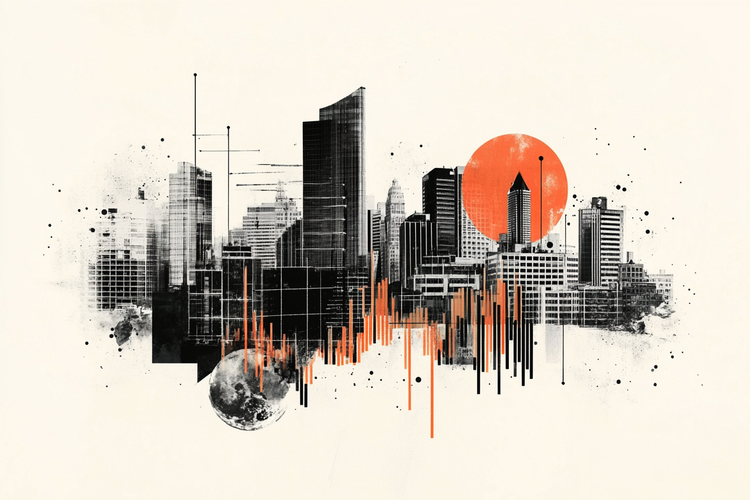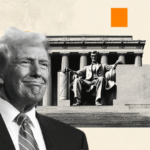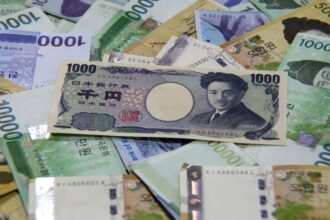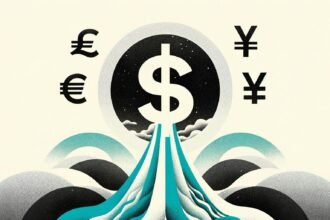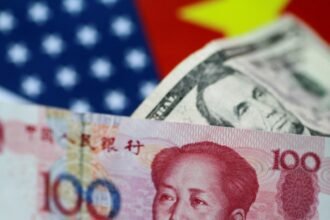There’s a kind of superstition that settles over markets every time tech begins to soar again — as if we can still hear the faint echo of the dot-com crash through the wiring of our Bloomberg terminals. Twenty-five years on, analysts still see ghosts in the tape. The moment Nasdaq flirts with new highs, the cry goes up: “Bubble!” The word is meant to sound prudent, but it’s often just lazy nostalgia dressed as wisdom. The truth is more complicated.
What’s happening now isn’t a re-run of Pets.com or Webvan; it’s a structural rerating of reality itself. The old heuristics — P/Es, forward multiples, CAPE ratios — can tell you valuations are stretched, but they can’t explain why the market’s gravity has shifted. When an economy rewires its own neural network, the old compasses spin uselessly. We’re in one of those rare rewiring phases where earnings, adoption, and innovation all feed back on each other.
The hallmark of a true bubble is when capital outpaces the imagination of what it can actually build. Back then, the runway was all promise and no plane. Today, the planes are already in the air — data centers humming like industrial furnaces, AI inference running on real revenue, cloud profits compounding quarter after quarter. The speculative element exists, sure, but it’s not untethered. It’s mapped to an infrastructure renaissance that’s as physical as it is digital.
There’s an old pattern in bubble mathematics — “faster than exponential” growth that ends in self-destruction. You can see that curve in tulips, railways, housing, and 1999 internet stocks. But the present ascent doesn’t quite fit the geometry. This is more of a series of steep ramps interrupted by controlled pullbacks — algorithmic digestion rather than mania. It’s the market adapting to new earnings power, not levitating on pure story. The cycle looks noisy only because the calibration is happening in real time.
The behavioral texture is also different. There’s no mass retail fever pouring into micro-caps or unprofitable dream stocks. The exuberance is concentrated — a tight cluster of high-earning behemoths whose cash flows rival sovereigns. You could argue the risk is that this concentration makes the tape brittle; if one giant stumbles, the index bends like a bridge cable. But that’s fragility of composition, not delusion of value.
The other key difference is leverage. Bubbles feed on borrowed oxygen; this one breathes mostly its own air. There’s dry powder in money-market funds, yes, but margin debt isn’t the accelerant it once was. The excess today is psychological — the conviction that every new chip or model checkpoint will rewrite human productivity. That conviction will wobble at times, but it’s not toxic; it’s part of every technological cycle since Gutenberg.
The academic crowd has tried to chart the anatomy of hype — the way innovation narratives spread through research networks before they spill into markets. But even those models struggle to capture the present dynamic. The feedback loop between science and capital is tighter, faster, and less delusional. The AI era isn’t about faith; it’s about returns arriving ahead of schedule.
Still, this isn’t a fairy tale. Overvaluation is real. Earnings expectations are elastic until they aren’t. A single macro tremor — policy tightening, a liquidity drain, a sentiment break — could still compress multiples violently. Every trader knows that stretched doesn’t mean safe; it means the climb demands precision. Yet it’s also true that markets often overprice the apocalypse.
So when people whisper “bubble,” what they’re really doing is mourning the loss of the old valuation gravity. The paradigm has shifted, and it unsettles those who built their careers measuring P/Es against history books. But history can’t price what it’s never seen before. The last two decades built digital networks; this decade is about teaching them to think. That’s not speculative froth — it’s the beginning of the next productivity wave.
If we’ve learned anything from 2000, it’s that bubbles burst when narrative outruns earnings. So far, the narrative is being chased by earnings, not the other way around. It’s not cheap, but it’s real. The better analogy isn’t 1999 — it’s 1956, when transistors were just beginning to rewrite the industrial order. We’re in that kind of moment again, where the risk isn’t owning too much of the future, but owning too little of it.
So no — this isn’t a bubble in the classical sense. It’s a premium on inevitability. The market is paying forward for a transformation already underway. The danger isn’t the mania; it’s mistaking acceleration for fragility. Traders who confuse altitude with unsustainability often miss the quiet revolutions happening under the hood. And when the next correction comes, it won’t be the crash of fantasy — it’ll be the repricing of pace.
We’re not chasing ghosts anymore. We’re trading the blueprint of the next economy.

